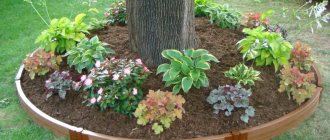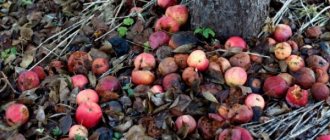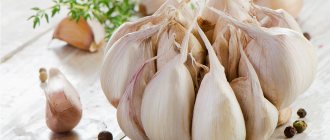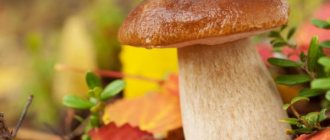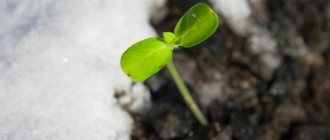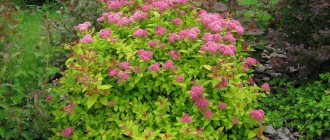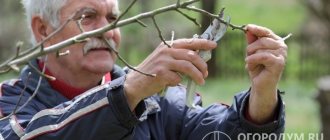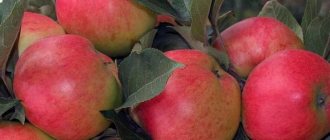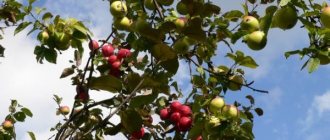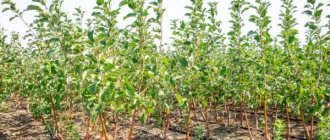Why is bole cleaning necessary?
Many novice gardeners do not understand why they need to remove excess bark from a tree, and also do not know what such a procedure is called.
Over the years, the bark on trees ages, cracks appear on it and, eventually, it dies. Many people think that this is a completely natural process, and such bark does not harm the plant. However, there is a high probability that danger may lurk in the cracks formed.
A large number of species of harmful insects prefer to overwinter in deep cracks. In addition, the development of fungal diseases and rot is very often observed in such cracks. Pathogenic bacteria are most active in damp and warm weather.
Removing old bark from a tree trunk is a sanitary and hygienic procedure. Its main goal is to prevent the appearance of harmful insects and the development of dangerous diseases.
Trees that regularly undergo such cleaning grow and develop much better when compared with those crops that do not undergo this cleaning. The fact is that such a procedure has a noticeable impact directly on the life of the tree.
After excess dead bark is removed from the trunk, the plant’s access to air will noticeably improve. It becomes much easier for such a tree to “breathe”, which has a positive effect on the growing season, significantly speeding it up.
If you do not promptly clear the tree of old bark, then over time mosses and lichens will grow on it, which still must be removed. The fact is that dead bark with deep pores is an excellent place for their growth and development.
Solution for whitewashing fruit trees
Recipe three:
It is imperative to whitewash the trunk a little below the surface of the earth; to do this, you need to slightly rake the earth around it, and after the layer of whitewash has dried, fill the earth back.
There is another version of the disinfection solution, prepared from 2 kg of ash and a piece of laundry soap, which are diluted in 10 liters of hot water. This composition, when warm, is applied with a rag or a bunch of grass to the standard. Ash is a disinfectant for the plant and feeds it at the same time.
Autumn whitewashing protects the trunk shell in winter from the formation of ice during the period of alternating thaws and frosts.
Be careful not to injure living tissue. Even a small cut can turn into big trouble. It is important that there is no dead bark left on the trunk and at the bases of large branches and that all the debris ends up on the litter. Collect all scraped pieces and burn them in the fire.
Thanks to slaked lime or a ready-made composition purchased in a specialized store, you can protect your fruit plants from diseases and pests for a long time.
chudoogorod.ru
Rules for removing old bark
Some gardeners do not know how to properly clean the trunk from dead bark. First of all, you will need to prepare:
- scraper;
- oilcloth or fabric;
- a brush made of metal.
The procedure for cleaning the trunk from dead bark:
- A piece of fabric or oilcloth should be spread on the surface of the trunk circle so that it fits closely to the trunk of the plant. It should cover the entire surface of the soil near the tree being treated (the radius should be approximately 100–150 centimeters).
- Then take a scraper and use it to carefully remove a layer of old bark from the tree.
- When large pieces of bark are removed from the trunk, this area must be cleaned. To do this, use a pre-prepared metal brush.
After the cleansing procedure is completed, the plant should be covered only by young, smooth bark. It is very important to consider that such cleaning is carried out before the trunk is whitened or coated with a mixture of manure and clay. The wood must be painted at the end of cleaning.
When cleaning is completed, the film that is placed under the plant must be removed. Any plant residues on it must be destroyed.
This bark may contain pathogenic microorganisms that cause the development of many diseases, and there is also a high probability that pests can settle in it. That is why it is recommended to destroy such plant residues.
There is another way to clean the plant. The fact is that the old bark, while it is dry, is extremely difficult to remove from the trunk. To facilitate this procedure, the bark should be soaked with water. That is why it is recommended to carry out the cleaning procedure in damp weather, or you can wet the trunk with water from a hose in the morning until the bark gets wet.
Then take a garden saw (can be replaced with a hacksaw), bend it slightly and then move the teeth along the bark from top to bottom, while pressing on the “scraper” with the weight of your body. Layer by layer the old bark must be removed. They do this until the living tissue of the young bark appears.
Whitewashing fruit trees in the fall?
Next we select a tool. For these purposes, you can use a special garden scraper, or a standard metal brush.
Next, let the whitewash sit for a little while, about a few hours, and use it for its intended purpose.
What problems do trees face in winter?
The bark from the trees is burned along with the rest of the garden waste
The bark of each tree is a protective layer of the trunk, and therefore it must be protected
You cannot apply whitewash in too thick a layer, because this is not plastering the walls of a house. If the white is applied too thickly, it will begin to crumble and crumble, and then the work will have to be redone. The optimal thickness is 2–3 mm.
Removing old branches
Along with the procedure for cleaning the trunk, the plant is cleaned of dried branches. It is recommended to remove such branches after the sap flow has stopped. Therefore, when preparing a tree for whitewashing in late autumn, you can free it from unnecessary branches.
It is necessary to clear the plant of dried branches a couple of times per season, namely: in the autumn, when the growing season ends, and in the spring, before the sap begins to flow. We must also remember that if large branches are being removed, then the cut areas must be treated with garden varnish or painted with oil paint based on drying oil.
If you carry out the procedure of cleaning fruit crops regularly and in a timely manner, they will not only delight you with a rich harvest, but will also be much less likely to get sick or be affected by pests.
AllaAuthor of the article
Did you like the article?
Share with your friends:
How to treat apple tree slices after pruning. When to treat cuts and damage to apple tree bark?
In order for apple trees to bear fruit every year, the crown is formed annually, removing unnecessary shoots, redirecting young branches, cutting down dry and diseased ones.
But when pruning, wounds remain on the trunks, which should be disinfected and treated with a protective agent. IMPORTANT! You cannot prune trees and cover wounds with a special product on the same day. Before covering cuts on apple trees, wait a few days - the cut should dry out.
Wound treatment in warm sunny weather.
When to cover up cuts on apple trees depends on the time of year and the weather:
- In autumn, during the rains, the cuts take a long time to dry out. Sometimes you have to wait 7 - 10 days for the wound to stop getting wet and to be treated;
- In spring, in warm sunny weather, the sawn cut can dry out in two days.
When pruning in summer, only young, non-lignified shoots are removed. A cut of small diameter quickly heals on its own and does not need special treatment.
In winter, at sub-zero temperatures, the wounds on the apple tree do not heal; through them, frost damages healthy branches, so trees are not pruned in winter.
Sections up to 2 - 2.5 cm in diameter are disinfected, but not covered with anything. They close quickly on their own; such a cut poses no danger to the apple tree.
With cuts larger than 3 cm, work is carried out according to the plan:
- Immediately after pruning, clean the wound from burrs and roughness with a sharp garden knife;
- Use a brush to coat the saw cut with a disinfectant solution, which will protect against pathogens from penetrating the wound;
- Leave for several days until dry;
- Cover the damaged wood with a special product, without touching the bark of the apple tree along the edges of the cut.
If in winter the bark of an apple tree is damaged by rodents, cracked due to temperature changes, or gets sunburned, treatment is carried out in the spring, when the temperature stops dropping below zero.
Damaged areas are cleaned down to healthy wood and treated in the same way as after seasonal pruning of trees.
CAREFULLY! If an apple tree has been chewed by hares, it can only be saved if the damage is minor.
Green plaque on the trunk of an apple tree
Many gardeners have noticed a small green coating on the trunk of an apple tree or other fruit trees. Does it pose a danger and how to protect the apple tree from such a plaque? It should be said that in most cases the presence of a light green coating on the trunk of an apple tree does not pose a danger. This is most likely a lichen that can be easily cleaned with a brush, and the fouling itself does not cause any significant harm to the tree. Usually lichens appear on the north side or in rainy, cool years. Fighting green plaque on the trunk of an apple tree is not difficult. You need to use a soft brush to clean the wood, and in the spring, as a preventive measure, you will need to cover the trunk with iron sulfate, then whiten it with appropriate paint. When clearing lichen from a tree trunk, act carefully so as not to injure the bark. You can also additionally disinfect the tree trunk with a light solution of vitriol.
Green plaque on the trunk
Apple trees dry out: treatment of plantings
It should be said that there can be many reasons why apple trees begin to dry out. These are mechanical damage to the tree, improper care, disease and other reasons. If you have such problems, you need to inspect the tree for mechanical damage and traces of various diseases. If any problems with the bark are detected, it is necessary to treat it on time. If it is difficult to determine the reason why the apple tree is drying, we can recommend that you provide it with the most intensive care possible. Apply appropriate mineral and organic fertilizers and regularly water the plantings. Also, excellent results are shown by rejuvenating pruning, which allows you to solve problems with drying out of old trees.
Preparation of whitewash solution
When cleaning the casing, do not damage living wood. Even small scratches will cause significant harm to the tree, because it will remain with this wound for the winter. But an unprepared surface cannot be treated either: this will reduce the protective properties of the whitewash layer.
When diluting the composition, you should achieve
- 200 g of copper sulfate powder.
- Stem gall midge is one of the most dangerous pests of raspberries.
After drying, the lime layer will become more resistant to precipitation; some gardeners sometimes even add glue to the solution to make the paint more moisture resistant.
Whitewash solution
- Source sadoved.com
- If trees are not properly prepared for frost, then at the end of winter or at the beginning of spring, they can become seriously ill, and the possibility of their death cannot be ruled out.
- .
If the whitewashing of tree trunks did not occur in the autumn, you will need to support the trees in early March. Whitewashing fruit trees in the spring will help protect trunks and branches from sunburn and kill infections on the surface of the bark. A little later, around mid-to-late March, you can re-whiten the trunks of fruit trees, exactly those that you whitened in the fall.
Wearing gloves and plastic goggles to protect yourself from dust and small chips, you can get to work.
- After finishing work, you need to collect all the garbage. If the oilcloth was previously laid out, then this is easy to do. You just need to carefully collect the oilcloth along with the garbage, then burn the garbage in a fire so that harmful insects cannot be reborn.
- sour cream consistency without lumps
Dilute in 8 liters of water.
Flowers are also susceptible to pests, and lavender is no exception. Read about insect pests of lavender in this article.
You will need cloth gardening gloves to complete this step. Under no circumstances should metal brushes or scrapers be used to clean bark. These tools will only damage it further, causing destruction instead of cleaning. Dissolve To ensure that the solution has disinfecting properties, add 0.5 kg of copper sulfate to it, and for stronger adhesion to the trunk - 0.1 kg of wood glue. Cleaning
During this period, very often a phenomenon occurs such as changes in daily temperature conditions (by approximately 15-20°), after which cracks may appear in the tree bark. First, the surface tissue is affected, after which the problem can penetrate deeper into the plant trunk.
